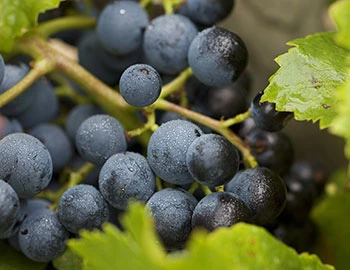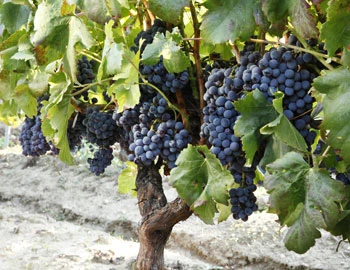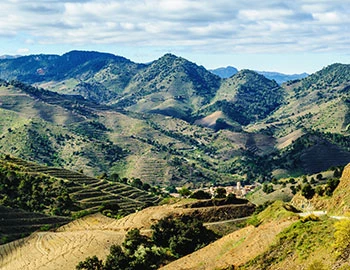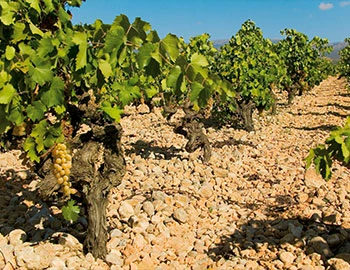
Vi de Vila Gratallops 2021
DOCa Priorat, Álvaro Palacios, 750 ml

Description
The first village wine in Spain based on the Burgundy model: Vi de Villa Gratallops. All the vineyards are located in the municipality of Gratallops and some of them are planted the traditional way with different vine varieties in the same vineyard (field blend), including a small percentage of white grapes. Predominant in the cuvée is the Garnacha with its incomparable fullness, intense aroma of wild berries and floral notes.
Álvaro Palacios «Winemaker of the Year 2022»

Congratulations to Álvaro Palacios for the title of «Winemaker of the Year 2022», awarded by the renowned wine critic MW Tim Atkin. Álvaro Palacios is one of the most important and talented winemakers in Spain and has achieved cult status with his wines from Rioja, Bierzo and Priorat.
Attributes
| Origin: | Spain / Catalunya / Priorato |
| Grape variety: | Garnacha, Carignan |
| Ripening potential: | 2 to 12 years |
| Drinking temperature: | 16 to 18 °C |
| Food Pairing: | Roast saddle of venison, Hearty stew with pulses, Châteaubriand, Filet Wellington |
| Vinification: | fermentation in wooden barrel, fully destemmed |
| Harvest: | hand-picking, selecting the grapes (by hand) |
| Maturation: | in large wooden barrel/foudre |
| Bottling: | no filtration |
| Maturation duration: | 16 months |
| Volume: | 14.5 % |
| Note: | Contains sulphites |
Alvaro Palacios, S.L.
Álvaro Palacios was only 25 years old when he moved to the lonely Priorat in 1989. He left his parents’ vineyard in Rioja (Palacios Remondo) behind, which had grown too small for him. He joined forces with a group of friends to reawaken the sleeping beauty of the Priorat, which the prior inhabitants had mostly abandoned in search of a better and easier life in the cities.
Coming from the vibrant cosmopolitan city of Barcelona, it’s a good hour and a half’s drive to the Priorat. First, you head southwards down the coast until you turn inland after Tarragona and enter this wild, mountainous region. In summer, it smells of hot stone and dry herbs under the haze of the shimmering heat. Hard to believe that the grapevines on the terraced slopes can have such a vibrant green colour. Their roots search for water several metres deep in the barren slate soil, which is known locally as llicorella.

Carignan
Fervid oddball
The red Carignan is a heat-loving Mediterranean grape. It has a bit of everything over other varieties: more colour, more tannins, more acid. It is not easy to press a harmonious wine from it alone. Hence it is most often encountered as a blend partner, as in the Côtes du Rhône wines. In Spain it is called Mazuelo and is part of the traditional Rioja recipe. It provides the wines’ acidic backbone. The most exciting varietal specimens come from the slate slopes of the Catalan Priorat (named here Cariñena), from old bush vines in Chile or from Sardinia, where it is known as Carignano. When pressed properly, this oddball generates a lush bouquet of plums and dark fruits. Its origins lie in the northwest Spanish Aragon, near the town of Cariñena. The surrounding wine area is also named after it. In order to prevent confusion with the vine, it is called Samsó there.

Garnacha
Grenache seldom comes alone
Spaniards and Sardinians make the Grenache contentious: both claim it originated from their country. In fact, it had already appeared in both places by the 16th century. But a large number of mutations in Spain indicates that it has deeper roots on the Iberian Peninsula. The Grenache is meaty, rich in tannins and spicy, with a wonderful, fruity sweetness and rich aromas of blackberry, cassis, plums and pepper. Under the name Garnacha, it contributes fullness to the Rioja. In Sardinia it is called Cannonau, where it yields strong, expressive wines. But its stronghold is in France. Grenache is the star in Châteauneuf-du-Pape and streams into many other assemblages from the south. Its preferred partners are Syrah and Mourvèdre. This blend is also very popular abroad. In Australia, these wines are simply called "GSM".

Priorato
Priorat: Vergessen, wiederentdeckt, gefeiert…
Noch anfangs der 80er Jahre war das Priorat eine durch die Abwanderung geschwächte Problemregion. Dann entdeckten vier junge Winzer den verlassenen Talkessel, der nur eine Autostunde von der katalonischen Mittelmeerküste entfernt liegt, und begannen mit der Restauration der alten Rebanlagen. Heute sind die Priorat-Weine, die meistens von den alteingesessenen Sorten Garnacha und Cariñena geprägt werden, weltweit gefragt. Dank der spektakulären Renaissance der Priorat-Weine erlebt die ganze Region einen Aufschwung.

Catalunya
Catalonia: the great range
Spain’s second largest wine region has an impressive variety to offer. As a result, there are eleven different designations of origin in Catalonia. As the home of cava, Catalonia is one of the leading producers of sparkling wines produced according to classical methods. There is a wide selection of both elegant white wines and well-structured reds. Areas such as Priorat or Montsant have experienced an enormous upswing in recent years. The traditional sweet wine Moscatel de Sitges is also produced here.

Spain
Spain – Variety and perfection
“Somewhere in la Mancha, in a place whose name I do not care to remember...,” begins Don Quixote's odyssey.
The most famous part is definitely when Don Quixote thinks windmills are his enemy and wants to fight them – until they nearly kill him. It’s possible there was a bit too much of the La Mancha wine at play. Spanish vines fight for their survival in rugged landscapes, battling fierce drought and rough soils. But they fight well.


